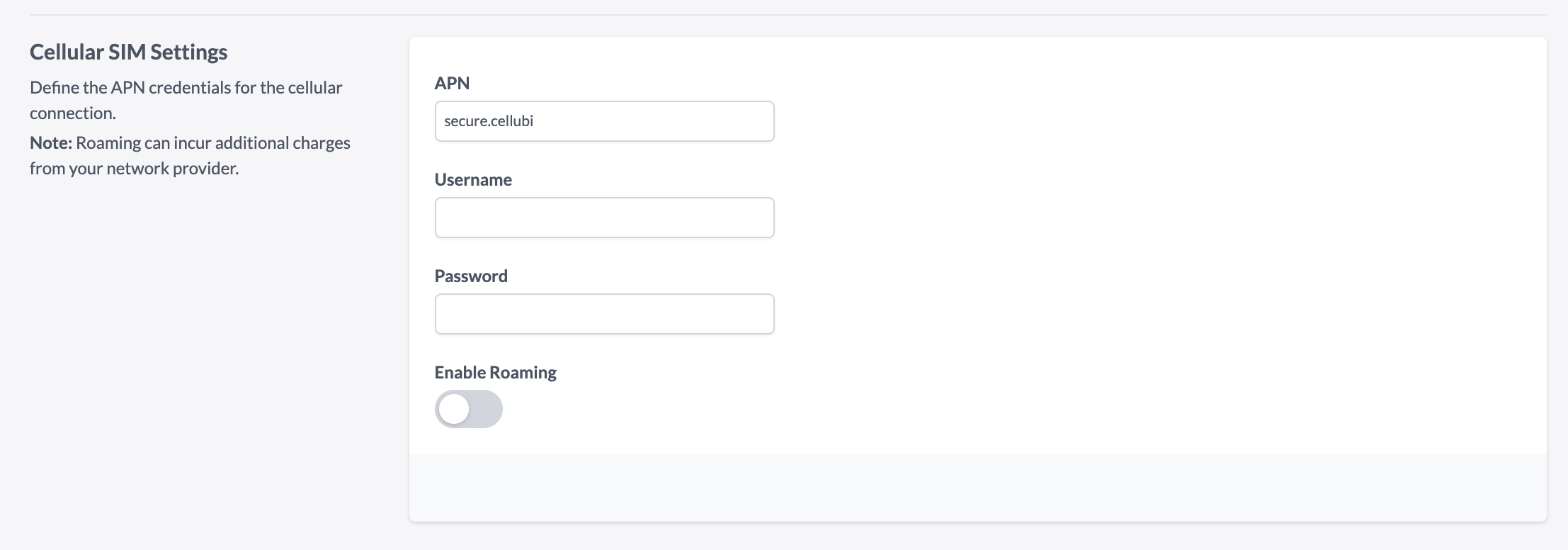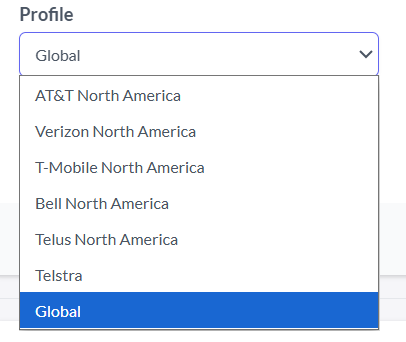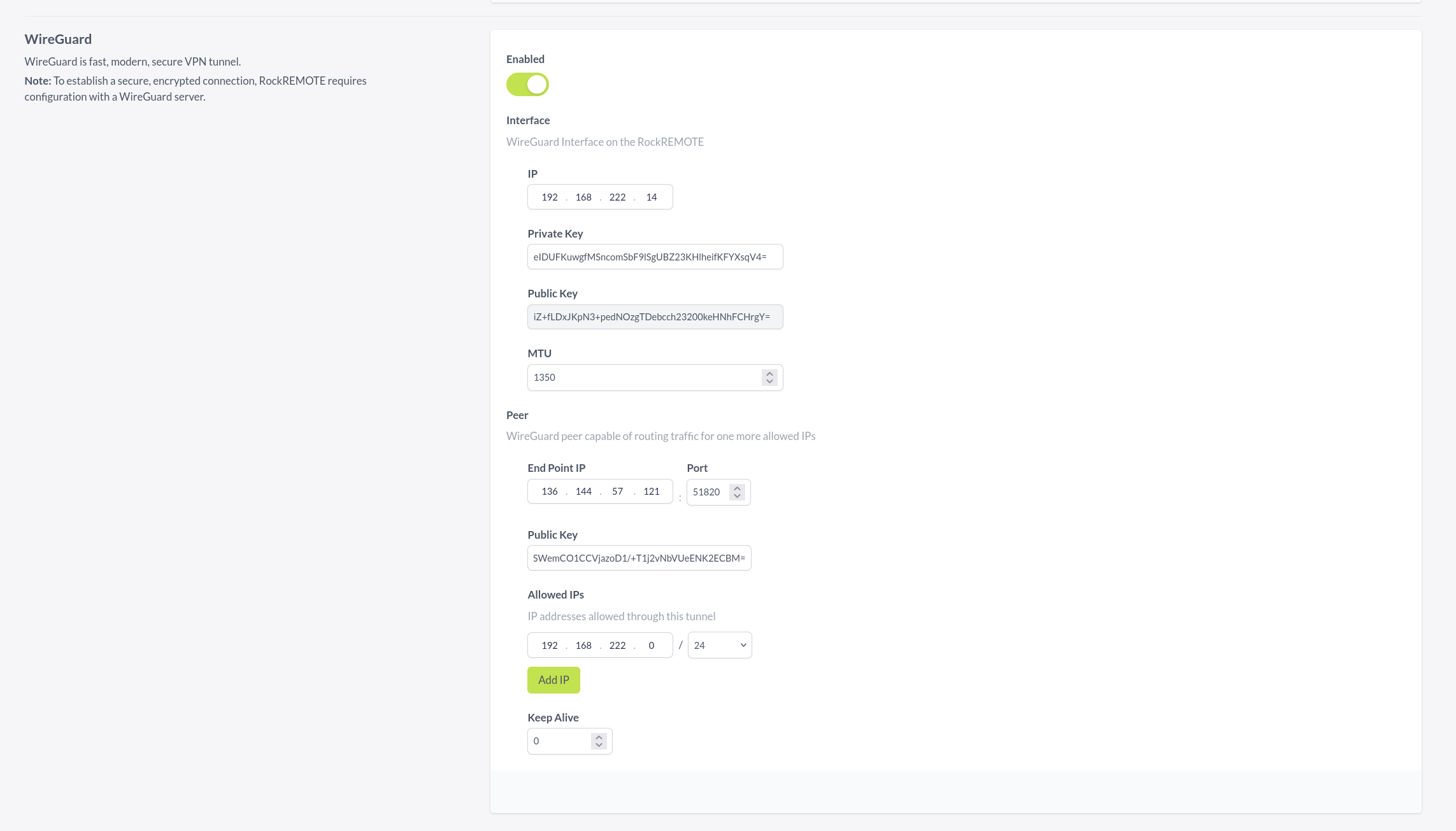📣 Firmware Update:
Firmware Version 1.13.1 is now released! Please follow the link here or update via Cloudloop Device Manager.
WAN Configuration
RockREMOTE has 2 WAN interfaces: Iridium and Cellular (LTE). Only one of these are connected at a time.
The WAN page allows configuration of various WAN related settings.
WAN Routing

Connection strategy
Auto: Connect to Cellular network. Failover to Iridium according to the Failover Settings.
Cellular: Connect to Cellular network.
Iridium - Connect to Iridium network.
None (default): Not connected.
Allow IMT while connected via Cellular
This option is enabled by default but if disabled; the Iridium modem is powered off, as a result disabling IMT when the connection strategy is Cellular or Auto but connected via Cellular.
Cellular Network Configuration

Your RockREMOTE may be provided with a Cellular SIM preinstalled or you may install your own SIM (See Installing SIM cards in the RockREMOTE Installation section).
Once the SIM is installed the APN name and access details provided by your cellular network provider should be entered into the appropriate fields to enable your device to access the network.
Depending on the version of Cellular module installed there may also be an option to select a carrier profile. When selected the RockREMOTE will select the appropriate module firmware to ensure that correct operation with that carrier. If the profile does not match the SIM then a connection may be refused.

Cellular network APN settings are required for both Cellular and Auto connection strategies.
Failover Settings

RockREMOTE provides the capability to automatically switch between Cellular and Iridium network connections when cellular coverage is lost.
The solution uses the Cellular network as the default connection and employs a IP ping mechanism to defined IP address(s) to identify if the cellular connection is available.
When the cellular network identified as being unavailable, traffic is automatically routed via the Iridium network until such time as the Cellular network becomes available again.
The failover configuration form provides flexibility to tailor the failover settings to suit the specific needs of RockREMOTE deployment.
WireGuard

RockREMOTE provides functionality to have a VPN using WireGuard.
- Enabled: Activates the WireGuard interface; requires a valid configuration.
- Interface IP: Private IPv4 address assigned to the WireGuard interface, determined by the server configuration.
- Interface Private Key: Base64-encoded private key. RockREMOTE generates a default unique key, but this is user-configurable.
- Interface Public Key: Automatically generated from the Private Key; non-configurable.
- Interface MTU: Maximum Transmission Unit (MTU) of the WireGuard interface, typically 80 bytes less than the WAN MTU to accommodate the WireGuard header. Default value on RockREMOTE is 1350, adjusted for the cellular interface MTU (usually 1430). WAN MTU can be confirmed in the System section of the UI under Network Interfaces.
- Peer Endpoint IP: The Public IPv4 address of the WireGuard server.
- Peer Endpoint Port: The listen port the WireGuard server.
- Peer Public Key: The public key of the WireGuard server.
- Allowed IPs: List of IPs to be routed over that WireGuard server. Setting this to
0.0.0.0/0will result in all traffic going over the WireGuard interface and the WireGuard server must be configure reroute this traffic on. - Keep Alive: Interval in seconds to send a keep-alive over the WireGuard interface. A short period can result is extra charges if the WAN is configures as Iridium.
Once configured and enabled the RockREMOTE dashboard will indicate the WireGuard interface up with WireGuard tunnel Up.

Other settings
1:1 NAT allows a single Local Device to receive all inbound traffic, and bypass outbound firewall rules.
This is explained in more detail in the LAN section.
DNS specifies the DNS servers used for any queries the RockREMOTE needs to make (for example, if NTP servers are specified by hostname).
The RockREMOTE also runs an caching DNS server available to Local Devices; queries to this will get forwarded to the DNS servers specified here.